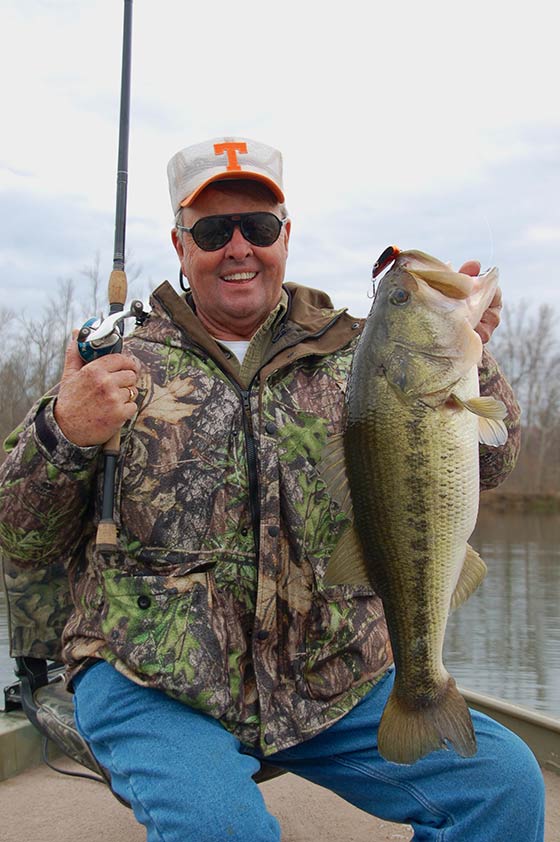Ask BillPosted: February 4th, 2015 by Bill Dance Q. Hey Bill, I have heard that ponds can be productive during the winter months. Is this true, and can you offer some insight on this? Bill: Why, sure. I am always glad to cast out a line of thought. When water temperatures drop into the low 40s, all comfort diminishes … food intake is less, feeding times are briefer and less often and they prefer to strike smaller lures than larger ones. Like I said earlier, bass that live in our larger lakes with deeper water have choices. But in a small pond, choices are far more limited. They’ve gotta accept what’s available, but they will bite if presented the right lure with the correct presentation. During the winter, a farm pond can turn on big time. All it takes are a couple of warm days and nights warming the shallow areas only a few degrees above the general volume of the pond. Two or three degrees will bring small minnows and baitfish floating to the surface and to the shallows to take advantage of the warmer layers of water. Naturally predator fish, like the bass, follow.
There are, of course, differences in pond types that influence where bass will be. A large run-off pond with a big dam may have an exceptionally large trough from where dirt was removed to construct the dam. This trough can hold the largest concentrations of fish during the coldest weather. Now, run-off ponds that are scooped out will naturally have deep water only in the middle of the basin and are very difficult to fish without a boat. Often, deep areas of a pond will remain a bit warmer than the surface when it’s extremely cold and fish will bunch up there. Let’s discuss another type of pond and how water temp affects it. Let’s say a pond was dug and filled by damming off a small flowing creek. Now, this presents a quite different situation. This pond has a small overflow or spillway with current moving over or through it. The small shallow creek that flows from the upper reaches meanders its way through the countryside until it reaches the pond. During the winter the creek, being shallower than the pond is exposed to cold run-off from possible snow or ice melt and cold rain plus the air temp. The small spillway at the dam draws or pulls the current, and it’s guided down one side or through the middle of the pond, depending on its location to the drainage area. Normally the trough at the dam will be the deepest, and the floor of the pond progressively tapers shallower up towards the head of the pond. The deepest water close to the dam will normally be a few degrees warmer than other parts of the pond. The current path will be the coldest. Therefore, it’s smart to work deep areas away from the current on cold days. Now, let’s look at it another way. Suppose we’ve had several warm nights and days with several hours of a heavy, warm rain and a southerly 10- to 15-mile an hour wind. Now, the shallow flow or discharge of current from the creek has flip-flopped from cold to warmer water. In this situation, you should concentrate on fishing the warmer current areas and the shallower sections of the pond. When fishing a farm pond during the winter, one must understand success seldom comes easily. But it will come if you think in terms of how bass and the pond you’re fishing react to water temp, and how to adjust your thinking to fishing extremely slow during these cold months. If you do this, success can be only a cast away.
|
Upload your trophy bass photo (or any other fish) to BillDanceOutdoors.com! Or, post comments about other photos submitted by Bill Dance fans.
Bill Dance is one of the most recognizable names and brands in fishing and outdoor gear. Please browse through our selection of superior products that proudly carry the Bill Dance name.
|






